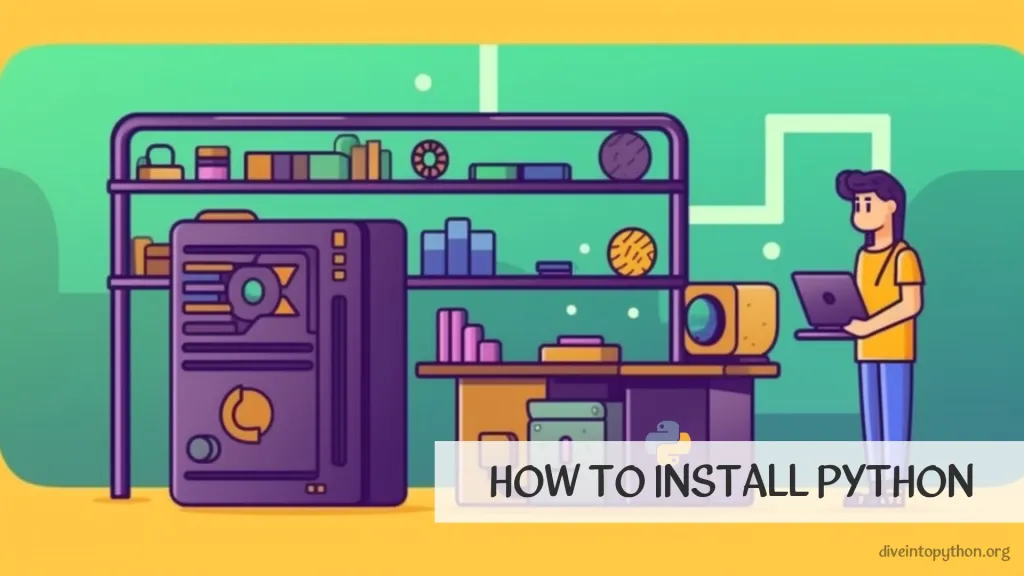To get started with Python, installing it on your machine is the first step. In this tutorial we will explore how to install Python using various methods on different operating systems.
Python is a widely popular programming language that has gained immense popularity in recent years. It has become a go-to language of choice for developers and data scientists alike, owing to its versatility, flexibility, and ease-of-use. In our tutorials for beginners we will delve into what Python is and why it's so cool, along with the various tasks that it can be used for.
Whether you're a beginner or an experienced programmer, this section provides a free comprehensive guide to learning Python, with step-by-step tutorials and practical examples to help you master this popular language in Python. So if you're looking to enhance your coding skills or start a career in programming, explore this section to unlock the full potential of Python!
How to Learn Python with Our Tutorials?
Python is a high-level language that is easy to learn and use. It's versatile and supports a wide range of programming styles, making it an ideal choice for many applications. Python is widely used in web development, scientific computing, data analysis, machine learning, artificial intelligence, and many other fields.
We, as a team of enthusiasts, wrote tutorials for all the most important topics in Python. You can find links to top-level articles below - just start your reading from one of them and dive deep into sub-topics. The best way to learn Python is to learn by examples: each tutorial from this section is based on code examples.
Python Tutorials
Start your Python learning today with our articles absolutely for free.
Basic Statements in Python

One of the features that contribute to this characteristic is the use of simple statements, expressions, and operators in Python. In this article we will explore the basics of it's using and how they can help streamline your programming process.
Variables in Python

One of the fundamental concepts to grasp when learning Python is variables and types. Understanding these concepts is critical to writing efficient and effective Python code that interfaces with a wide range of data types and structures. This article will introduce you to the basics of Python variables and types, exploring how they work and their importance in the world of programming.
Date and Time

Python programming language is commonly used to work with dates and datetime objects. It provides a comprehensive set of tools that enable developers to effortlessly manipulate, format, and display dates and times. In this guide, we will explore the various functions and modules that help us work with dates and datetime in Python.
Functions in Python

One of the key aspects of Python is the ability to define and execute functions, which are reusable blocks of code that can perform specific tasks. In this article, we will explore the basics of functions in Python, including how to define and call them, pass arguments, and return values. We will also discuss some advanced concepts, such as lambda functions and decorators, that can enhance your coding skills and make your programs more efficient.
Classes in Python

In the world of Python programming, understanding classes and objects is essential to creating efficient and effective code. Classes allow you to define a set of attributes and methods that can be used to create objects, which are instances of those classes. In this article, we'll explore the basics of classes and objects in Python, and how they can be used to simplify and streamline your coding workflow.
File Handling and File Operations

Python, as a programming language, has a variety of built-in functions and libraries that make working with files a breeze, and in this article, we'll explore the different techniques and best practices for handling files in Python.
Loops in Python

Loops in Python are incredibly powerful tools that allow programmers to automate recurring tasks. Using statements such as for and while, programmers can iterate through a list of data or create a loop that continues until a certain condition is met. In this tutorial we will dive deeper into the world of loops in Python and explore their many uses.
Modules in Python

One of the reasons behind Python success is its vast library of modules, packages, and libraries, which makes it possible for developers to leverage preexisting code when developing their applications. In this set of article we'll take a closer look at some of the most common modules, packages, and libraries used in Python.
RegEx in Python

Regular expressions, or regex for short, are essential tools in the Python programmer's toolkit. They provide a powerful way to match patterns within text, enabling developers to search, manipulate, and even validate data efficiently. Whether you're parsing through volumes of log files, cleaning up user input data, or searching for specific patterns within a block of text, regex offers a concise and fast way to get the job done.
Exception Handling in Python

One of the fundamental aspects of Python that contributes to its robustness is its exception handling system. Exceptions in Python are errors detected during execution that can disrupt the normal flow of a program. Understanding exceptions is crucial for writing reliable and efficient Python code.
Data Science with Python

Python has become the go-to programming language for data science professionals across the globe. Its simplicity and readability, combined with the powerful libraries available, make it an excellent choice for data analysis, machine learning, and more.
